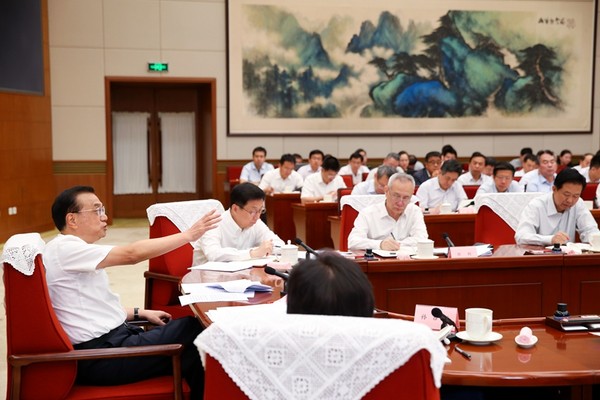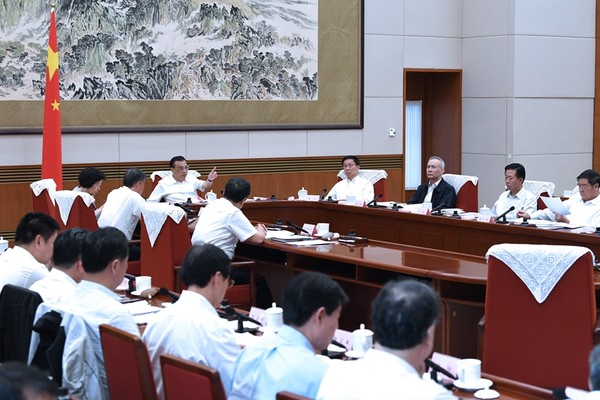
Premier Li Keqiang noticed a group of statistics from over 10 reports from western provinces and municipalities during a meeting of the steering group on western development on Aug 21. Those documents revealed the immediate need to improve rural sewage treatment.
The centralized sewage treatment rate in cities and villages will reach 93 percent and 80 percent, respectively, and the harmless disposal rate of household garbage will reach over 99 percent, a local official told Premier Li.
When the Premier asked about the current centralized sewage treatment rate of local cities, towns and villages, and the operation situation of sewage treatment facilities, the official told him the rate for centralized sewage treatment in urban areas has reached beyond 90 percent, while the figure in rural areas is only about 70 percent due to unstable operation of facilities.
A related ministerial official explained that the centralized sewage treatment rates in rural areas are not satisfactory for certain reasons, highlighting unsound construction of the sewer systems.
Another provincial official from the western region added that the local authorities had been dedicated to the construction of sewage treatment facilities and sewage treatment plants are already in place in over 300 counties.
The official suggested to the Premier that there is considerable potential for investment in the province. Given there are over 1,100 counties, the construction calls for financial subsidies in this regard from the central government.
“How much does it take to treat sewage there?” Premier Li asked.
The official said some remote villages don’t have what it takes to establish water supply plants, which rendered residents’ fees for sewage treatment unfeasible. So financial subsidies act as the sole means to keep sewage treatment plants in these villages.
In that case, only 100 out of 300 sewage treatment plants retain their daily operation, the official added.

Premier Li said residents’ fees for sewage treatment and garbage recycling need to be widely accepted, otherwise it is not sustainable. In the meantime, innovative investment and operation modes should be promoted to introduce private capital into this field, bringing the merits of the market economy into full play and improving the system of sewage treatment charges.
Investment in sewage treatment in urban and rural areas will usher in a promising amount of revenue in the long run, the Premier said.
According to related materials, sewage treatment projects in urban and rural areas were unanimously taken as a significant measure in the urbanization process for some developed countries. It is a mighty driving force of investment, economic growth, and social development.
Premier Li added that China only has a 58 percent urbanization rate. Sewage treatment, acting as the very basis of the fundamental construction of urbanization, boasts colossal investment potential, particularly for the western regions where the construction of sewage and garbage treatment is still markedly weak.
Construction of a sewage treatment facility is a significant project for people’s well-being, for ecology and development, Premier Li said.
